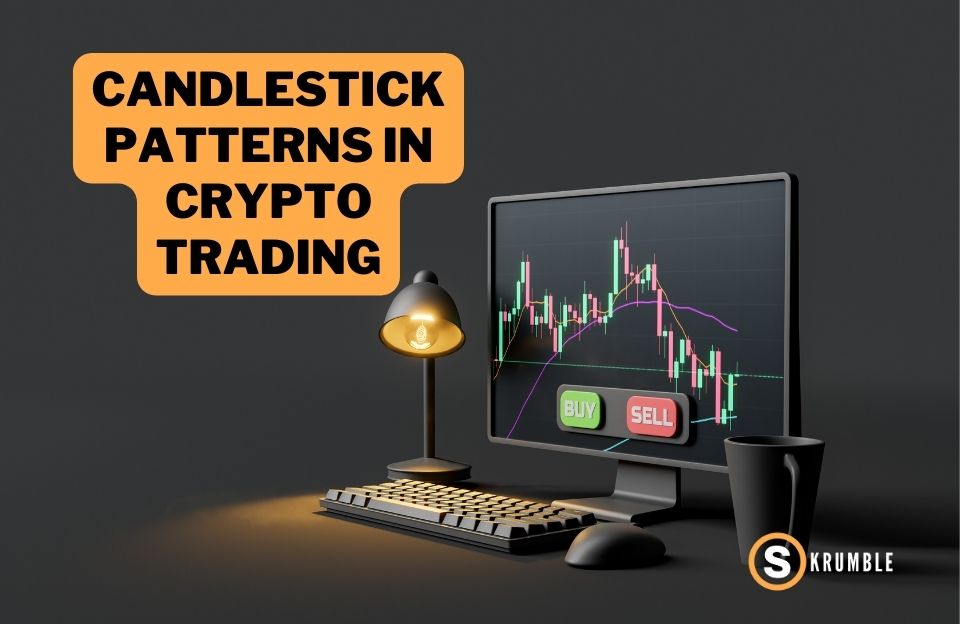Swen Keller
- Home
- /
- Guides
- /
- Intermediate
- /
- Contract for Difference (CFD):...
Contract for Difference (CFD): Meaning Explained
Swen Keller
What is a Contract for Difference (CFD)?
A Contract for Difference (CFD) is a product of the financial derivative market where traders speculate on the future price movements of a certain commodity or security. However, the underlying asset is not delivered, and the difference between the opening and closing positions is settled with cash.
In the ever-evolving landscape of financial markets, Contract for Difference has emerged as one of the most popular and flexible trading instruments. Thanks to their unique nature and several advantages, CFDs have gained immense popularity among investors and traders over the last few decades. This article will dive deep into the subject of CFDs and help you get a comprehensive understanding of them, their background, advantages and disadvantages, types, costs, and more.
Contract for Differences (CFD) Definition, Uses, and Examples

A Contract for Difference is an arrangement undertaken between the trader and broker, according to which the broker has to pay the trader the difference between the value of an asset at the time of opening and closing of the contract. In other words, this financial derivative product enables investors to trade by predicting future price trends.
Perhaps the most unique aspect of CFDs is that the trader does not actually have to own the underlying asset. Moreover, the asset can be anything from individual stocks, stock indices, commodities/physical goods, fiat currencies/forex, to even cryptocurrencies and virtual assets. Through CFDs, participants can profit from both rising and falling markets, making it a flexible tool for trading in several financial instruments.
By enabling market participants to trade without purchasing and owning the actual asset, a CFD provides them with a safe way to experience the price fluctuations of the security or commodity it mirrors. As CFDs are traded on margin, traders need to deposit only a fraction of the total contract value by leveraging their position. This ability to trade on margin amplifies the profit potential, but it also maximizes the risk of losses, making CFDs suitable for expert and experienced traders only.
Example of Contract for Difference
Imagine a CFD trader who wants to buy a CFD on SPDR S&P 500, which tracks the S&P 500 Index. The individual buys 100 shares at the price of $200 per share for a total of $20,000. The CFD broker demands a minimum of 5% down for the contract to open. Hence, the individual is initially required to pay only 5% of $20,000, i.e., $1,000, to the CFD provider.
A month later, the SPY is trading at $250 per share, and the trader decides to exit the market by closing his position with a $50 per share profit. The difference between the opening price ($20,000) and the closing price ($25,000) is then cash-settled. The $5,000 gain is credited to the trader’s CFD account.
Brief History and Background
The origins of CFDs can be traced back to as early as 1974 when the first CFD appeared in Britain as a way to leverage gold. They have been widely traded across different markets since the 1990s. The concept was introduced to bypass the country’s strict regulations and stamp duty tax, which was charged on every traditional share transaction. By trading in CFDs, investors could avoid the tax as they did not technically own the underlying commodity or security.
Soon CFDs became increasingly popular and expanded beyond Britain to the rest of the world. The technical developments further facilitated their accessibility, allowing CFD traders to use online trading platforms. As a result, the derivative that was once limited only to institutional investors can now be accessed by retail investors.
How Does Contract for Difference Work?
CFDs are traded based on contracts that outline certain terms and conditions agreed upon by CFD traders and CFD brokers. These contracts contain crucial information, including the underlying asset being traded, contract size (which is the quantity of the asset), leverage ratio, and costs or associated fees. The contract specification will vary from broker to broker and also change with the type of CFDs. For example, the contract size will vary between an equity CFD and a forex CFD.
Leverage is a key feature of CFD trading that allows participants to hold larger positions than their original investment would normally allow in a traditional investment setting. The margin allowed in leverage is represented by a ratio, such as 1:10 or 1:20. For instance, if a broker offers a 1:10 leverage ratio, a trader can control a position ten times larger than their initial investment. In other words, you can hold a position of $10,000 by depositing only $1,000. The profit or loss is then calculated based on the leveraged position, multiplying potential gains and losses. As a result, risk management becomes an integral part of CFD trading to prevent substantial account depletion in case of adverse market movements.
Through CFDs, market participants can profit from both rising and falling markets, making them quite a usable tool for all kinds of market conditions. When a trader trades on the increasing price of an asset, it is called a long position. In a long position, therefore, the trader buys a CFD at the current price and aims to sell when the price rises. The profit is calculated by subtracting the buying value from the selling value.
On the other hand, when a trader predicts the price of an asset to deplete over time, they will prefer to trade in a short position. In this case, they borrow a CFD from the CFD broker and sell it immediately, planning to buy again when the price drops in the future. For short positions, the profit is calculated by subtracting the selling value from the buying value. In this way, it makes sense for investors to trade CFDs in both rising and falling markets.
How is CFD Trading Different from Traditional Trading?
Several factors make CFD different from the traditional classes of commodities, securities, and derivative trading. Following are some key differences.
1. Ownership of Underlying Assets
The factor that makes trading CFDs truly unique is the nature of ownership of the underlying assets. In traditional trading, when an investor buys a share of a company’s stock or commodities, they become the legal owner of that particular physical asset. Similarly, when an investor sells their position, they are selling the physical ownership of the underlying security or commodity.
In contrast, CFD trading involves no ownership of the underlying asset. Traders simply predict the price movement in the near future without ever owning the asset. This makes CFDs highly attractive to those who aim to avoid the complexities and costs associated with the ownership of actual securities and commodities.
2. Flexibility in Markets
Another differentiating factor with Trading Contracts of Difference is the flexibility to access several financial markets simultaneously using a single CFD trading account. This feature enables traders to diversify their portfolios fairly easily. For example, you can engage in equity CFDs, forex CFDs, and commodity CFDs without the need for having multiple CFD accounts. As a result, the trading and account management procedures are simplified, and the need for multiple brokerage accounts is eliminated.
3. Short-Selling Opportunities
As mentioned before, trading Contracts of Difference allows you to short-sell, which is when a trader predicts falling price movements for a certain asset. Initially, the trader sells his ownership and then buys the asset back at a lower price. This is a clear advantage because firstly, most traditional markets do not allow this type of trading. Moreover, the few markets that do allow you to execute short-selling positions, such as futures and margin trading, are subject to a lot of regulations. CFD trading removes all such restrictions and makes short-selling straightforward and possible.
4. Lower Cost
Most forms of traditional trading come with a heavy fee structure, including brokerage commissions, exchange fees, stamp duties, etc. However, when it comes to Trading Contracts of Differences, the cost involved is much lower. It only includes spreads and overnight financing charges for longer trades. This makes trading CFDs an attractive and cost-effective option for frequent traders.
Advantages of CFD Trading
Contracts of difference present traders with numerous advantages.
1. Access to Multiple Markets
CFDs allow traders to access a wide variety of financial markets, which include stocks, indices, commodities, forex, virtual assets, and cryptocurrencies. As a result, traders are able to diversify their portfolios to a great extent and practice unique trading strategies that are otherwise not viable. Moreover, investors can choose to trade a certain CFD over the other based on their risk preferences.
2. Leverage Opportunities
Contract of Difference Trading is one of the few types of market trading options that involve leverage positions. It is a key feature of CFD trading and allows traders to control large positions with a smaller amount of capital. It magnifies the potential profit; however, it must be used smartly to manage the increased risk effectively.
3. Hedging Strategies
Investors can also trade CFDs to minimize their losses in a falling market by hedging their existing positions. Hedging means taking an offsetting position in related instruments to reduce potential losses in the primary investment. For instance, if a trader holds a portfolio of certain stocks that are performing poorly on the price chart, they can take short positions on stock CFDs to hedge funds against the overall value decline. It, thus, allows them to minimize their potential losses and protect their investments against adverse market fluctuations.
4. Cost-efficient
As mentioned earlier, CFD trading typically incurs lower costs and fees compared to traditional trading. Unlike other types of trading that involve brokerage commissions, exchange fees, stamp duties, closing fees, etc., CFD traders only have to pay spread to CFD providers and overnight finance charges in case of a trade that lasts overnight. This low cost is beneficial, especially for frequent traders, who take multiple trades every week.
5. Tax Benefits
Another huge advantage CFD trading offers are certain tax benefits, depending on the country of residence of the trader. In some regions, profits from CFD trading may be subject to a more favorable tax treatment than profits from other forms of trading, such as futures contract and traditional margin trading. However, tax regulations vary significantly by jurisdiction, and traders must always develop a good understanding of their local laws before they start to earn money trading CFDs.
Types of Contract for Differences
Contract for Difference (CFD) trading offers a wide range of trading opportunities across several trading markets. This factor allows CFD traders to capitalize on price movements in multiple markets. The following are the most popular types of CFDs you will find in financial markets today, that you can trade with CFD Brokers like OQtima.
Equity and Stock Index CFDs
An equity CFD allows traders to speculate on the price movement of an individual stock. Similar to all CFDs, traders do not own the actual stock and can take advantage of both falling and rising markets. Moreover, equity CFDs let traders invest in well-performing stocks of big companies without the need for substantial capital.
Stock index CFDs track the performance of a specific stock market index, representing the combined value of a selection of stocks or part of it. Popular stock indices include the S&P 500, Dow Jones Industrial Average, FTSE 100, Nikkei 225, and more. Through stock index CFDs, traders can gain exposure to the overall performance of a particular market or sector, rather than investing in an individual stock.
Commodity CFDs
Commodity CFDs include precious metal CFDs (gold, silver, platinum, and palladium), energy commodity CFDs (crude oil and natural gas), and agriculture CFDs (wheat, corn, sugar, etc.). Price movement for each type of commodity CFD is affected by different factors.
Forex CFDs
Forex CFDs mirror the price of forex pairs, where one fiat currency is exchanged for another at an agreed-upon rate. The most popular pairs traded in the forex market are EUR/USD, GBP/USD, USD/JPY, and AUD/USD. Several factors, including interest rates, economic indicators, geopolitical events, and global market sentiment, affect the forex CFD market.
Cryptocurrency CFDs

With the rise of cryptocurrency and virtual assets in the financial market landscape, several CFD providers have started offering cryptocurrency CFDs to traders. Popular cryptocurrency CFDs include Bitcoin, Ethereum, Ripple, and other altcoins. Some popular platforms to trade cryptocurrency CFDs are IC Market, Plus500, FX Pro, and Octafx. However, traders must remember that a cryptocurrency Contract for Differences is more prone to price fluctuations than non-crypto CFDs.
Risks and Challenges with CFDs
While the Contract for Difference (CFD) trade market offers various advantages, there are certain risks and challenges associated with it as well. Investors need to educate themselves about these risks in order to preserve their capital and achieve long-term success in the CFD market.
Firstly, CFDs are highly sensitive to price actions of the underlying security or commodity. As potential profits and losses are amplified through the use of leverage, slight movement in the price of the actual asset can cause significant gains or losses in very short periods. Moreover, rapid price movements can also lead to a gap risk, which occurs when the asset opens much higher or lower than the previous closing price, causing a gap in the price chart. It can result in slippage and unexpected losses.
CFD brokers require participants to maintain a minimum margin level to support their open positions. If the amount in the account falls below the required level by CFD brokers due to losses, they may issue a margin call. In case of a failure to deposit these additional funds to meet the requirement, some or all of your positions will be liquidated, resulting in further losses.
Since there are comparatively fewer regulations around the Contract for Differences market, investors must be extra careful when choosing CFD service providers. They must ensure that the chosen broker provides accurate and real-time pricing, fast execution, and fair trading terms. On top of that, transparent fee structures and clear terms & conditions are essential for a secure trading experience. The lack of regulations also means that CFD traders are not offered the same level of investor protection as is seen in some other markets.
FAQ
Most frequent questions and answers
CDFs can be risky due to the fewer market regulations, potential liquidation of positions, and the need to always maintain enough margin due to possibility of leveraged losses.
Being an OTC (over-the-counter) financial product, CFDs do not pass through regulated exchanges in the US. This means that the CFD trade is illegal in the US.
A CDF that provides exposure to the energy markets, allowing traders to capitalize on the price movement of energy commodities, like crude oil and natural gas, is called Contract for Differences Energy.
CFDs are financial derivatives that allow traders to speculate on the price movement of a certain asset without actually owning it. On the other hand, ETFs are investment funds that hold a basket of assets from one particular market and track its performance. You own a portion of the fund, which represents a share in the underlying assets held by the ETF.
While a CFD is always cash-settled, a swap can either be settled in cash or through physical delivery of the assets. Moreover, in the case of CFDs, the payment occurs only once, i.e., on the expiry date of the contract.
CFDs are a type of financial derivative that mirrors just the price movement of a certain underlying asset.
Although specific types of CFD provide exposure to stocks and stock indexes, the CFD trade market is not only limited to equity securities. Instead, you can speculate on price trends of everything from commodities and cryptocurrencies to currency pairs.
Skrumble.com provides all its content for informational purposes only, and this should not be taken as financial advice to buy, trade, or sell any investment instruments or products, including but not limited to cryptocurrencies, or use any specific exchange. Please do not use this website as investment advice, financial advice, or legal advice, and each individual’s needs may vary from that of the author. Investing in financial instruments, including cryptocurrencies, carries a high risk and is not suitable for all investors. It is possible to lose the entire initial investment, so do not invest what you cannot afford to lose. We strongly advise conducting your own research before making any investment decisions. This post includes affiliate links with our partners who may compensate us.
To view our privacy policy read here.






